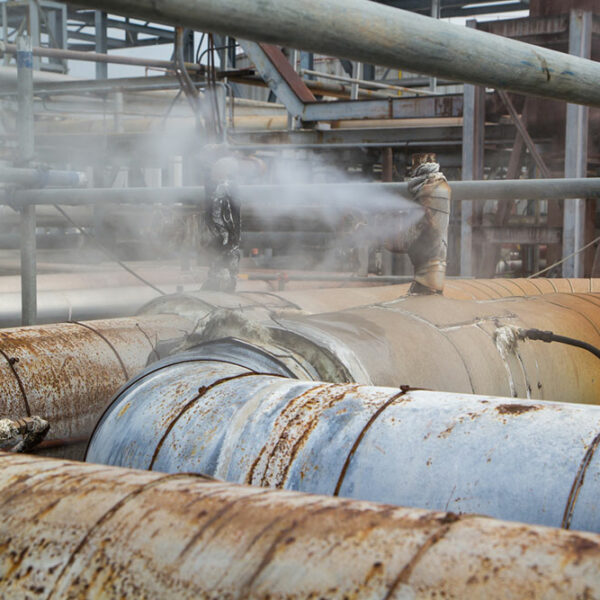9 Ways to Detect Gas Leaks
Natural gas is usually transported through pipes for various purposes, including cooking and powering appliances. Although the system is certified as safe, gas leaks could still occur, posing risks to people in the area and the environment. Moreover, if not addressed on time, gas leaks can become expensive to repair and manage. So, it is important to understand how to detect a gas line leak to resolve the issue promptly.
Potential causes of gas leaks
- Excessive or low pressure in the gas system
- Accidents during excavations, resulting in a pipeline becoming ruptured or punctured
- Explosions close to a pipeline
- Equipment corrosion or outright failure
- Heavy materials or equipment placed over buried pipelines
- Water main leaks that could affect pavement and roadway strength
- Excess ice and snow accumulating on gas pipes and meters could also affect gas appliance exhaust and combustion air vents
- Natural disasters, like hurricanes, earthquakes, or floods
Ways to detect gas leaks
1.

A homeowner is liable to pay for natural gas used each month. However, if one notices the bill is unexpectedly higher than normal, it could indicate a gas leak. The leaked gas may reflect the amount utilized in the gas meter reading. To identify the leak, one should determine a baseline usage and monitor the difference over time. Any change in the baseline is usually considered a potential gas leak.
2. Using a gas leak detector
One of the most effective ways to detect a gas leak is with a gas leak detector. This device is easy to install and could significantly reduce the risk of a disaster. The device is created to detect the presence of natural gas or propane in a designated area. It could be handled or mounted in a fixed location. The device can measure the presence of natural and propane gasses in the home and emit an audible alarm if a gas leak is detected.
3. Be mindful of the surroundings
If one does not have a gas leak detector at home, the first step in detecting the leak is to be mindful of their surroundings. If there is a hissing noise in the home, or if the house smells like rotten eggs, there’s a high possibility of a gas leak. The noise may come from a leak in a pipe or an appliance, while the smell of rotten eggs is usually associated with the odor of gas. One could also look around for stains on walls. Any discoloration could indicate that gas has leaked. Being mindful of these warning signs could help detect a gas leak early and take measures to resolve it promptly.
4. Soapy water test
One could create a mixture of soap and water in a spray bottle or brush to locate the leak. The individual must cover areas where pipes run to identify the fault. If there is a leak, especially from pin-sized holes, then applying soapy water in the area will render bubbles, indicating the presence of a gas leak. This technique helps locate the exact location of the leak so that homeowners can address it promptly.
5. Air bubbles in the mud
A natural gas leak may occur outside or under the home too. If one notices bubbles in wet areas around the home, it could indicate natural gas leaking into the ground. An external leak could occur when there is excessive pressure in a pipeline, usually caused by a blockage in one of the pipes. Gas pipes may also break due to human activity, including digging. So, before undertaking any work around the home, one must conduct a survey to identify pipelines and crucial wiring to avoid safety issues during the project. An expert could help inspect potential problems noticed near the home, evaluate the situation, and offer recommendations on how to proceed safely. This approach helps prevent accidents and ensure the safety of one’s home.
6. Inspect the stove
When a burner is switched on, it produces a blue flame. However, if the flame appears orange or red, it might indicate the presence of more natural gas in the air than oxygen. In this case, one should turn off the stove immediately, evacuate the home, and contact an emergency service to investigate the issue.
7. Plants that look shabby
If a homeowner takes proper care of the plants around the home but still notices them withering away, it could be due to a gas leak. Natural gas can prevent the roots of a plant from absorbing oxygen, which might result in them wilting and perishing. Yellow patches on the lawn and small or misshapen leaves on trees are other indicators of gas leaks.
8. Health complications
Excessive levels of natural gas could result in natural gas poisoning. Some symptoms may include severe headaches, suffocation, memory problems, loss of concentration, nausea, and fatigue. If an individual or their family members experience these symptoms unexpectedly, they must seek healthcare attention immediately. They must also air out the home by opening all the windows and contacting a professional to identify and fix the gas leak.
9. Hire the expert
While the above methods could help detect a gas line leakage, in more complex situations, homeowners must hire a gas leak detection company to deal with the leakage. These experts will use advanced tools to identify the precise leak in the pipe and offer to repair or replace the damaged portion for a fee. The expert may also recommend using modern technology to prevent or identify potential leaks in the future, which is necessary to safeguard the home and its occupants.





